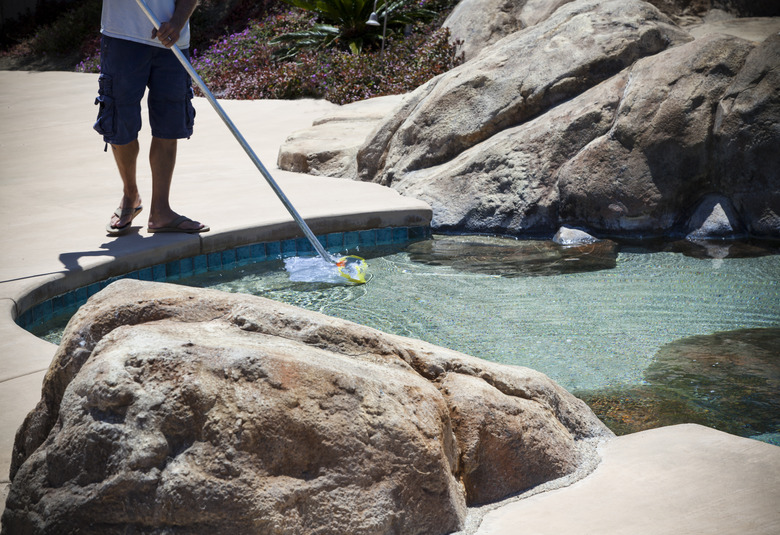How To Remove Tadpoles From A Swimming Pool
We may receive a commission on purchases made from links.
If you maintain your pool properly during the pool season and treat it with the right chemicals when you close it for the winter, tadpoles shouldn't be a problem because they can't survive in a properly chlorinated or brominated pool. If your pump should fail while you're away or you don't close the pool properly, though, you may soon notice hundreds of the larval amphibians, and before long, you may be kept awake at night by croaking. Shocking the pool will kill the tadpoles, but you can also be humane and relocate them.
Tadpole Relocation Procedure
Tadpole Relocation Procedure
You can introduce the tadpoles to a new natural environment if it's very close by in stages, changing the water conditions slightly with each new container you put them into before finally turning them loose in a pond or stream.
In the lab, relocating tadpoles from one tank to another is considered difficult because small changes in temperature, or salinity can shock and kill them. Filling buckets with pool water, catching the tadpoles with a net and dropping them into the buckets is probably safe — as far as the tadpoles are concerned — but you aren't likely to catch all of them. To do that, you're going to have to drain most of the water from the pool.
Things Needed
Removing Tadpoles From a Swimming Pool
1. Turn the Pump Off
Turn off the recirculating pump and place a screen over the drain outlet. Make sure the screen mesh is small enough to contain the creatures.
2. Partially Drain the Pool
Allow the water to drain until about a foot remains in the bottom of the pool.
3. Fill Some Buckets With Pool Water
Fill one or several 5-gallon buckets with some of the water that's left in the pool. Keep the buckets in the pool water to ensure the temperature inside the buckets stays the same as that in the pool.
4. Capture the Tadpoles
Catch the tadpoles with a pool net and deposit them into the buckets. Once you've got them all, drain the rest of the water from the pool.
5. Dry and Refill the Pool
Let the pool dry out before refilling it to ensure that any eggs that may have been deposited on the sides of the pool won't hatch.
Tip
After going to the trouble of collecting the live tadpoles, don't just dump them into a stream or pond — most of them will probably die. The best way to deal with them is to dump the bucket of pool water and tadpoles in a field or in the back of your property.
The creatures will suffocate and die because they are immature and fully aquatic, just like fish. Tadpoles still require the use of gills — not lungs — at this stage of life, meaning that they must remain in the water to breathe, just like fish. However, because it's impossible to tell whether or not your tadpoles are offspring of an invasive frog species, allowing them to expire isn't a bad thing.
Shock to Kill the Tadpoles
Shock to Kill the Tadpoles
You may not have the time or inclination to save the lives of the tadpoles that have taken over your pool, and if not, you can kill them by introducing the purifying chemicals the pool lacks. The actual procedure depends on the type of purifying system the pool employs, but in most cases, it involves introducing the recommended amount of chlorine and then pouring in a shock solution to maximize free chlorine. The chlorine will kill the tadpoles, and once they are dead, they are easy to remove from the water with a net.
Warning
Never release frogs, toads, or tadpoles into public or wild waterways. By relocating the tadpoles, you could unintentionally transfer invasive amphibians or plants as well as various diseases from one habitat to another.
